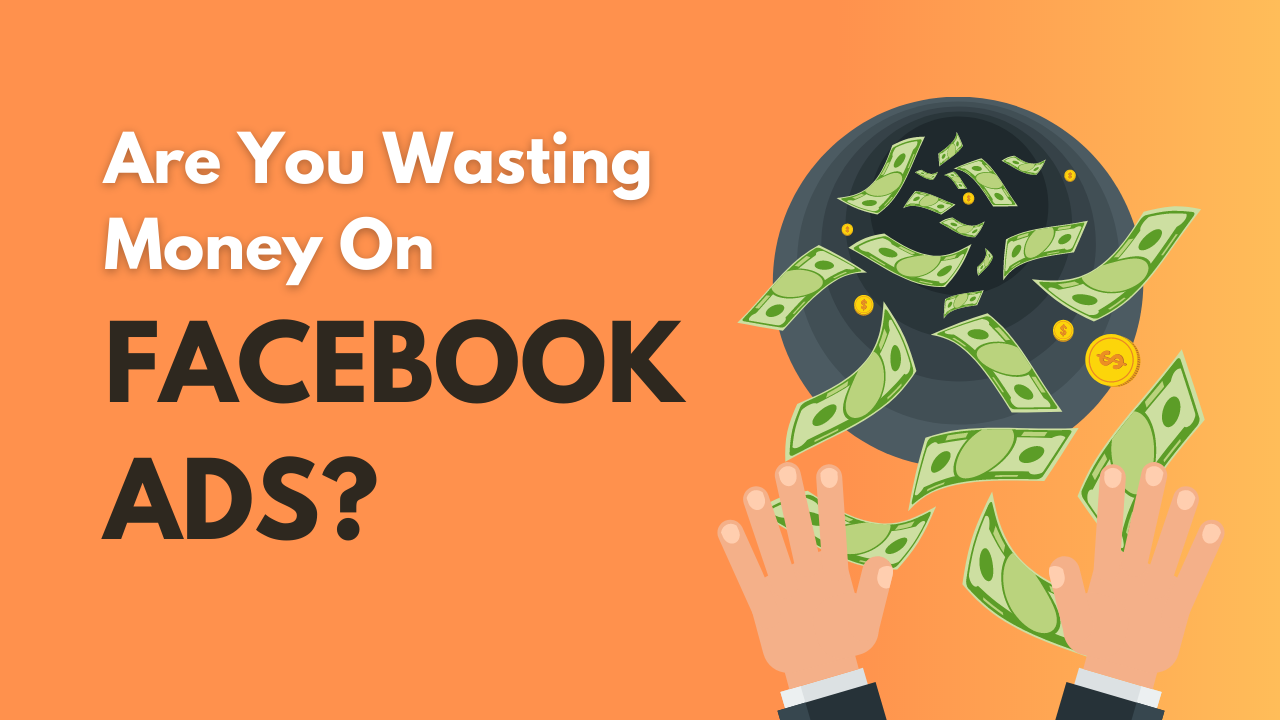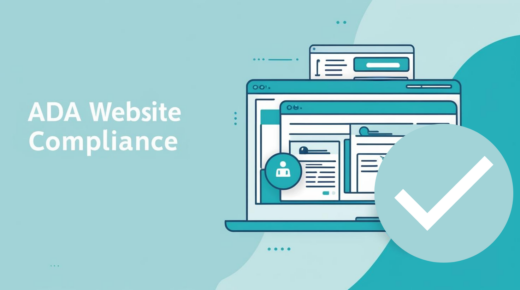Facebook ads are paid advertisements that businesses use to communicate with their target audiences among the almost 2 billion daily users of the social media platform. It’s most likely that your customers are among those Facebook users whose activities on the social media platform are constantly collected and stored.
How do you find your customers in such a massive market? You can find them if you use the Facebook Ads Manager that offers a wide range of options in creating, managing and measuring the performance of your ads.
Facebook’s giant database of user information and Ads Manager make a powerful combination to help businesses advertise and sell their products or services. However, there are advertisers who said they don’t get their desired results and just wasted money on Facebook ads.
Are you wasting money on Facebook Ads?
Facebook Ads Manager has many features that allow its users to customize their campaigns to their goals and budgets. However, some of the processes involved can be confusing if you’re a new user. You can make the following mistakes and waste your money.
1. Wrong campaign goal or objective
The type of Facebook ads campaign depends on the goal or objective to be achieved. So, if the advertising campaign goal or objective does not match what your business needs, you would be wasting money on your ads.
The Facebook ad set up menu asks you to choose from three main objectives — awareness, consideration and conversion briefly described as follows.
- Awareness: The objective if your ad is meant to reach more people and make them aware of the existence of your business and the products and services it offers.
- Consideration – The objective if your ad is for people who already know about your business. This is what marketers call the “lead generation” stage. In the ad, you send a lead magnet in exchange for a potential buyer’s email address where you can send more relevant and useful information about your product or service or the ad may also include the link to a site where they can find the said information.
- Conversion – This is the objective if the ad is for people who have seen information about your products or services. You want to convince them to buy or sign up for your offers.
The objective you choose during set up will determine the options that will appear on the menu. If your goal or objective does not match your business needs, you don’t get the needed results.
2. Not using Facebook Pixel
Facebook Pixel is a code that you can install on your website, landing page or other pages you want to track. It is an analytics tool that tracks the actions and other information about your website visitors.
Facebook pixel uses the data collected to build targeted audiences for future ads, track conversions, optimize ads and identify which advertising strategy works best to achieve your advertising goals.
Even if you’re using Facebook pixel, you can still waste money on your Facebook ads if the pixel is not set up correctly. Two features that are usually not set up correctly are the cookie type and advanced matching.
Set the cookie type to first-party in the Events Manager so that tracking of pixel data will not be blocked in some web browsers. If Automatic Advanced Matching is not turned ON, you won’t be able to track pixel microdata and some of the actions on your website will not be credited to your ad campaign.
If you don’t use Facebook pixel correctly, you’re missing a lot of information that is essential for the success of your Facebook ads.
3. Not targeting the right audience
Your Target Audience is the group of Facebook users who will potentially see your ad based on data collected by the social platform.
Targeting the right audience is crucial in finding your customers among the almost 2 billion daily Facebook users. Otherwise, you would be wasting your advertising money for exposure to an audience that is not likely to convert.
For example, you’re an eCommerce seller who targets cold leads or people who are not aware of your product or services and have never been to your site with your “buy now” type ads. In this case you’re more likely to waste money because your target audience lacks information to help them decide whether to pay for your product or services or not. You would get better results by retargeting an audience that already knows what you’re trying to sell.
Learn when to target the three Facebook ads primary audience types: Saved audiences, Custom audiences and Lookalike audiences.
4. Not testing your ads
Testing is an effective way to discover the positive and negative effects of a Facebook ad on your audience. It is an easy way to take the guesswork out of the campaign and give your audience the information they need.
Not testing your ads could mean that you’re wasting money on ads that don’t work.
Face book ad sets allow you to simultaneously run multiple ads with different combinations of text and images. Based on the test results, you can choose the best performing version of the ad.
You can also do split A/B testing on Facebook if you have only two ads with different copies and images.
5. Ads campaign strategy don’t consider the stages of the buying cycle
Facebook users are not there to specifically look for a product to buy. They are not ready buyers and you will be wasting money if you start off with a hard-sell ad.
Your ad campaign strategy to convert cold audiences into customers should be based on a sales funnel with stages for awareness, consideration and decision. Then, create different ads for each stage of the sales funnel
6. Ad is not effective
Your Facebook ads have a split second to catch the attention of your target audience on the social media platform. You’re wasting your money on Facebook ads that are not effective. Here are some of the reasons why your ad is not effective:
- Ad format is not appealing to the target audience
You can choose what you think is the best from the different formats that the Facebook ads manager offers but only testing can tell what is the most appealing ad format to your target audience. - Not using video.
If you’re not using video in your Facebook ads, you could be allowing other ads to be more appealing to your target audience. According to studies, more customers would rather learn about a new product or service from a video than other forms of ads.
A video on your ad could also make your target audience remain five times longer than when looking at a static ad.
A simple video using your mobile phone will do provided the text and the other elements are optimized for mobile devices. It is important to add subtitles to your video so that you can convey your message even without sound because some Facebook users turn off video sound on their setting.
To maintain engagement, keep your video ads within 2 minutes long.
- The ad copy is not compelling.
You’re wasting money on Facebook ads if your copy can’t convince or persuade your target audience to do what you specify in the call-to-action (CTA).
Find the most compelling copy for your target audience by trying different combinations of ad formats and copy using the Ads Manager. Then, track the ad performance to know the copy that gets the needed attention from your target audience.
7. Ignoring the ad comments
Ignoring what your potential customers are telling you is one way to waste money on your Facebook ads. The ad’s positive and negative comments are the direct and immediate feedback on your ad performance.
You’ll know what’s wrong or lacking in your ads as well as what your target audience is looking for from the comments. Use both positive and negative comments to improve your ad.
Responding to ad comments as soon as you can, will also help you establish a good relationship with your potential customers. They will have an impression that you care for them and would be more comfortable in deciding to buy what you offer.
How to avoid wasting money on FB ads
Facebook Ads can be a great source of new customers for your business. Facebook Ads Manager is a complex system because it offers a lot to help business owners create and manage their ads.
You would be missing a lot of potential customers if you don’t learn how to avoid wasting money while using Facebook ads.
1. Learn how to do Facebook ads correctly.
You may hire a Facebook Ads expert but if you have to run your ads yourself, you will need to learn the basics of the platform before you get started.
You have to take the time to learn how to use Facebook Ads Manager to create appealing images, choose your ad format, set up multiple ads set and the other advanced options that will help reduce your ad cost.
There are courses, books and articles available to help you learn how to do your Facebook ads correctly.
2. Monitor the relevant metrics and measure the campaign performance before you waste more money
For every new Facebook ad campaign, it is recommended to run several ads with different combinations of copy and images. Then, look at the relevant metrics, optimize the ads and choose the final ad version that has shown to be the most effective.
What are the relevant metrics? The relevant metrics to monitor depend on your campaign goal or objective. For example, if you’re on the “Awareness” stage of your ad campaign, the important metrics to monitor include the following:
- Cost per 1000 Impressions (CPM) or the cost of showing your ad 1000 times.
- Frequency or the average number of times a Facebook user has seen your ad.
- Link clicks or the number of Facebook users who click the link on your ad.
- Click-through-Rate (CTR) for links or the percentage of people who clicked the link on your ad after seeing it. If fifty (50) people saw your ad and only one clicked the link on it, your CTR is 2%.
- Cost-per-Click (CPC) for links or the average amount you pay for each click from your ad to your website. To compute for the average CPC, you divide the total amount you pay for clicks on your ad by the number of clicks.
- Leads or the number of Facebook users who visited your website after seeing your ad and your landing page.
- Total amount spent so far.
- Cost per Lead
You’ll find other metrics in Facebook Ads manager that will help you to check your ad campaign performance. Use your performance data to put in place the needed corrective measures that will help you stop wasting more money on Facebook ads.
3. Keep up with the changes in Facebook Ads.
The Facebook ad has been changing throughout the years. You have to know and keep up with the changes that recently include more Facebook ad formats and other new features. One major change that was announced around the middle of last year was the replacement of the Relevance score with the three new metrics- which will be rated based on the 5 rankings from below average (bottom 10% of ads) to above average.
- Quality Ranking: Ranks your ad’s quality against those of the other ads competing for the same audience. It helps to check your competitors’ ads.
- Engagement Rate Ranking: Compares your ad’s expected engagement rate with the other ads competing for the same audience.
- Conversion Rate Ranking: Compares the expected conversion rate of your ad with the other ads you’re competing with for the same audience.
The ranking of the three metrics is in the Ad Relevance Diagnostics of ads with at least 500 impressions.
The ad relevance diagnostics shows the ratings for your ad’s quality, engagement rate and conversion rate, the reasons why such rating was given and the recommendations. The recommendations are provided to help you identify the issues that should be corrected to improve your ads.
Final Thoughts
Facebook ads are necessary for most businesses wanting to sell their products or services to the massive market found on Facebook. It’s true that learning how to use Facebook’s Ads manager can be difficult. However, the ability to use it correctly can help your business gain new customers and increase revenues exponentially.





